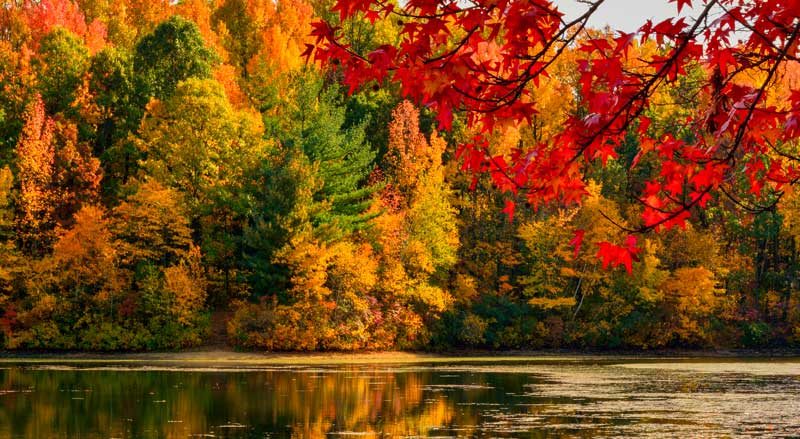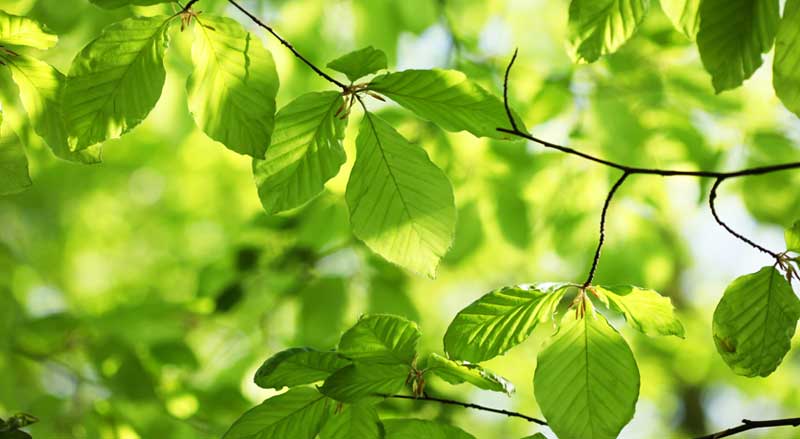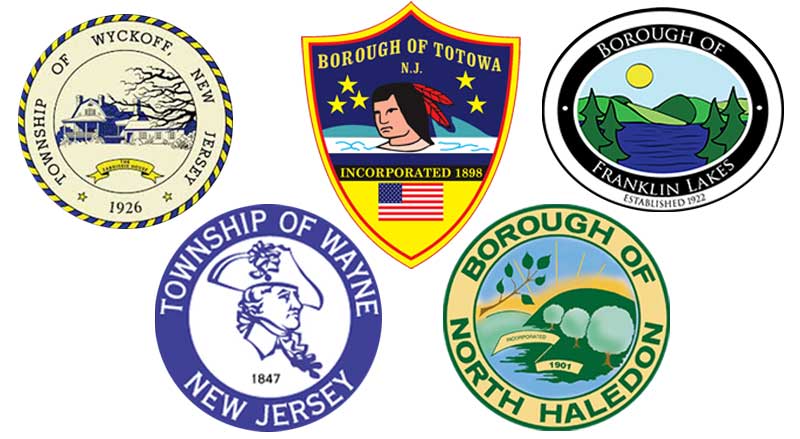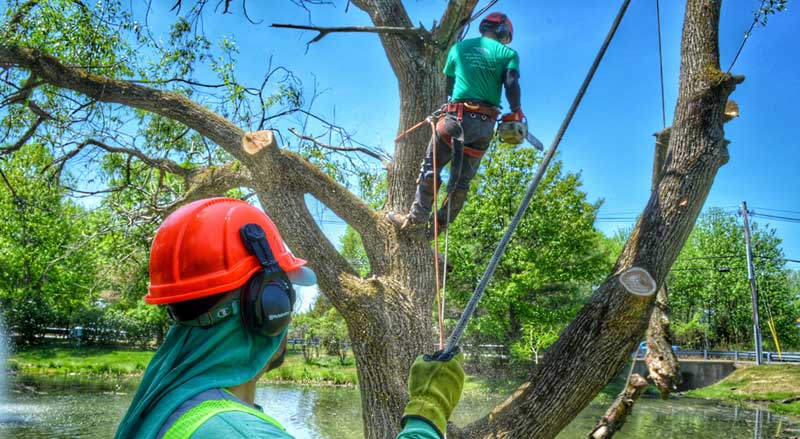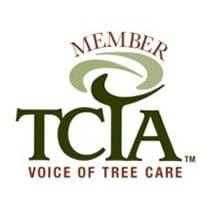Many people visit the Northeast states just to witness the magnificent fall foliage. Travelers delight in the intense yellows, reds, and oranges of turning leaves. But you can enjoy the beautiful color transformations right in your own backyard. Here are the best trees in NJ for fall color.
Maple Trees
Today there are over 100 species of maple trees. A maple leaf is the symbol of four US states and even adorns the flag of Canada, our neighbor to our north.
Maple trees are very hardy. Some can live up to 300 years. Maple flowers produce helicopter seeds that kids like to open and playfully stick to their noses. Maples also are used to create delicious syrup.
In the early spring, maples are a source of pollen for honeybees.
Autumn Blaze Maple Tree
People recognize this maple tree with its fiery red fall leaves.
This tree likes full sun. And enjoys moist, well-drained soil.
Planting zones: 3 to 8
Height: 40-50 feet
Vine Maple Tree
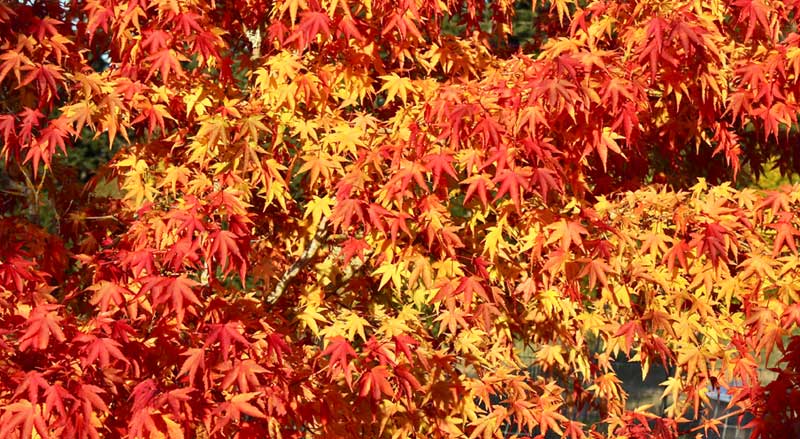
The leaves on this tree will turn orange, scarlet red, or yellow.
When it grows along streams or in shady spots under taller trees, it takes on a crooked form. It can also flourish out in the open, where it grows in a more traditional vertical tree form.
Planting zones: 6-9
Height: Up to 35 feet
Coral Bark Japanese Maple Tree
This maple truly knows how to put on a fall show. First its leaves turn a golden yellow. Then, right before the leaves fall, they turn a rosy red.
The coral bark Japanese maple enjoys morning sun and afternoon shade, as well as well-drained, sandy soil.
Planting zones: 5-9
Height: 15-25 feet
Northern Red Oak Tree
The northern red oak is the state tree of New Jersey.
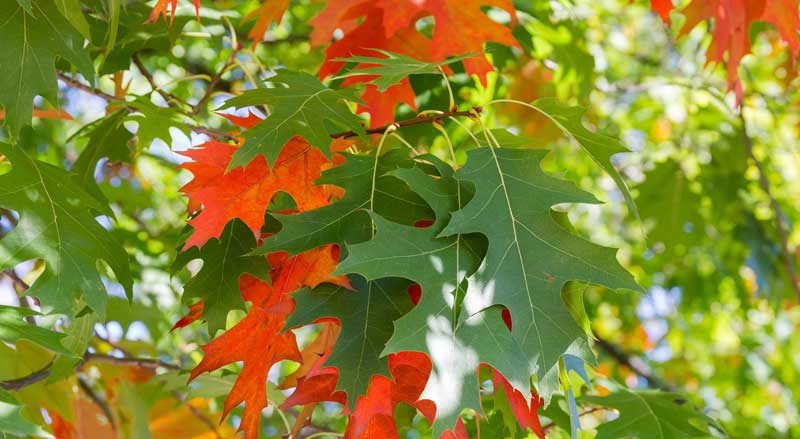
Red oaks show off brilliant fall foliage. Their leaves turn orange, bright red, and dark reddish brown in the fall.
These oaks provide ample shade and dramatic fall foliage.
Red oak leaf veins always have a hint of red on the leaf’s underside.
These oaks are found in forests and cities but want ample room to grow. Their growth rate is about 2 feet per year.
Wildlife love to feast on their acorns.
Planting zones: 3-7
Height: Grows up to 75 feet
Dogwood Tree
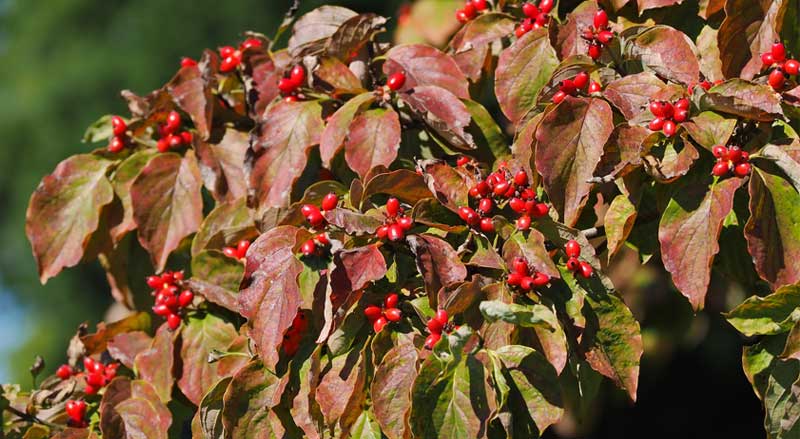
The dogwood tree has oval leaves that turn reddish purple in the fall.
The dogwood is a self-pollinating tree with both male and female reproductive organs. It produces seeds by itself.
Dogwood tree flowers can be red, pink, or white.
Birds enjoy dining on the fruit of the tree, which is usually shiny red berries. Berries can also be white, blue, or pale yellow.
A dogwood tree lives for about 80 years.
Planting zones: 6-9
Height: Up to 30 feet
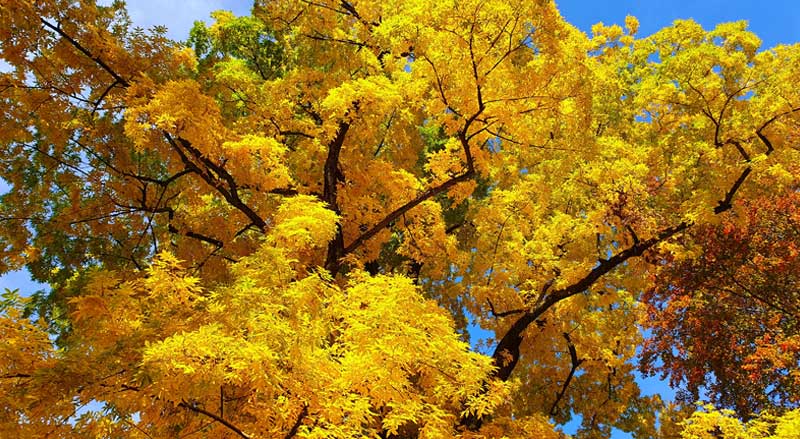
Bitternut Hickory Tree
This tree truly signals the start of fall; its leaves are among the first to change color. Bitternut hickory leaves change from green to yellow.
Furniture is made from the durable wood of the bitternut hickory.
Local wildlife, such as chipmunks, fox, squirrels, and rabbits, enjoy nibbling on hickory nuts. Squirrels like to hide them for the winter. While hickory nuts aren’t toxic for dogs, it can harm their digestive systems.
The tree can live up to 200 years.
Planting zones: 4-9
Height: 75-100 feet
Sweet Birch Tree
The sweet birch tree leaves offer the best birch tree fall color. Their leaves turn a brassy yellow in the fall.
This tree offers lots of summer shade and is more insect resistant than other birch trees. Its sugary sap is a favorite ingredient for homemade birch soda.
These trees tolerate cold temperatures well. They like a moist, well-drained soil.
Planting zones: hardy in 3-7
Height: Grows 40-70 feet tall
Sassafras Tree
Fall foliage fans and wildlife alike love sassafras trees.
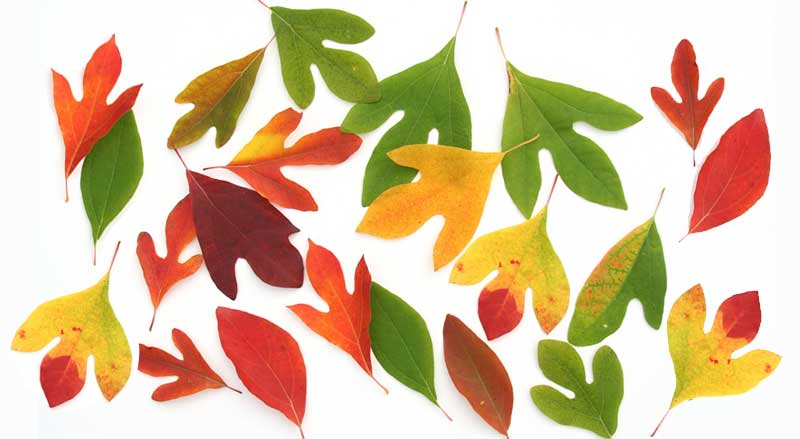
Their leaves come in different shapes and offer spectacular fall colors ranging from yellow and orange to intense red colors and purples.
Birds enjoying eating their blue berries.
Planting zones: 4 to 9
Height: Grows up to 50 feet
About Leaf Color
Fall leaf color depends on several factors, including genetics, which mainly regulates time of color change and color intensity. However, weather, and other environmental factors also play important roles.
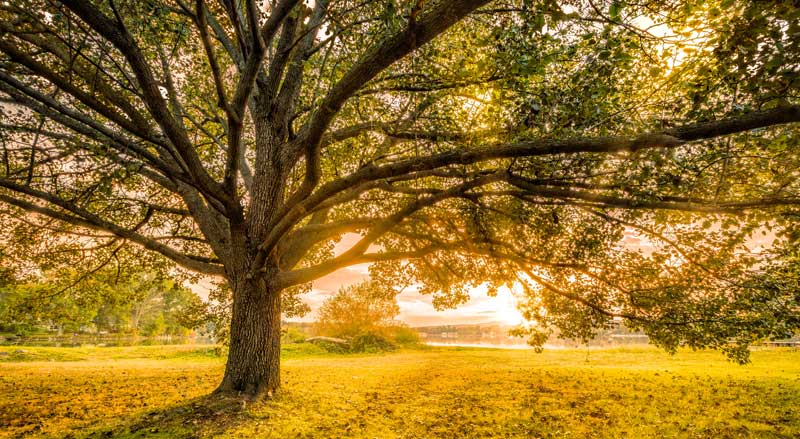
It’s impossible to completely predict fall leaf color. Trees stressed by drought or other factors can have their leaf color affected. Sunny autumn days with cool nights create the most intense color change.
Yellow and Orange Color
As days get shorter and temperatures cool, leaves slow down their food-making process of photosynthesis.
Chlorophyll in leaves breaks down, causing the green leaf color to fade and disappear. Yellow and orange colors in the leaf carotenoid become obvious and show up as fall colors.
Red Color
Anthocyanin chemicals in leaves filter out yellow-green light. If leaves collect more energy than they can use, they will become damaged.
Anthocyanins protect the leaves by slowing down photosynthesis in cooler temperatures.
The anthocyanin chemicals produce pigments that are red, violet, or sometimes bluish, which account for the leaves fall colors.
Know Your Planting Zone
When you select a tree for your New Jersey landscape, you want to be sure it falls within your planting zone. This will ensure that the tree will thrive in your climate.
NJ planting zones include 6a, 6b, 7a and 7b. You can find the planting zone for your exact NJ location in this USDA Map of New Jersey Growing Zones.
At Trees Unlimited, we offer exceptional care for trees and shrubs. If you are concerned about the health of any of your trees, or you need any other tree services, contact us today.

